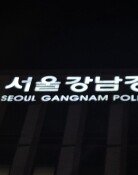Expanding Income Differential by Education
Expanding Income Differential by Education
Posted May. 25, 2001 07:59,
The aggravated inequality in income since the money crisis has not improved at all. Especially, as the number of companies, that employ an annual salary system and a piecework payment system, has increased, the income differential by education has much effect on the social structure that keep the poor, poorer and the rich, richer.
According to the data released from the LG Economic Research Institute (LG ERI) and the National Statistical Office, the Gini coefficient recorded 0.320 point, the highest figure, in 1999. The Gini coefficient illustrates that the higher figure indicates the wider inequality in income. It represented 0.317 point even last year when the economy had been recovered. This figure is much higher than 0.283 point in 1993, and is higher than 0.316 in 1998 just after the money crisis.
LG ERI analyzed that the aggravation of the income distribution has derived from various factors such as the increase of unemployment rate due to the economic slump, the increase of non-regular workers due to the increased flexibility of labor market, and the proliferation of the piecework payment system.
The ratio of the non-regular workers over the total workers recorded 52.4 percent, and the ratio of the wage of the non-regular workers over regular workers decreased from 90 percent to 80.5 percent.
According to LG ERI`s analysis, while the inequality in income increases 1.4 percent when the unemployment rate increases 10 percent, it increases 3 percent when the income differential by education increases 10 percent. This analysis indicates that the variable of education has had much more impact on the inequality in income.
Park Won-Jae parkwj@donga.com







